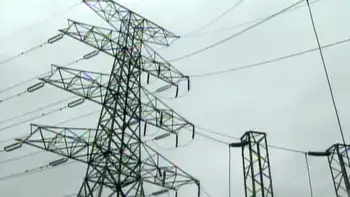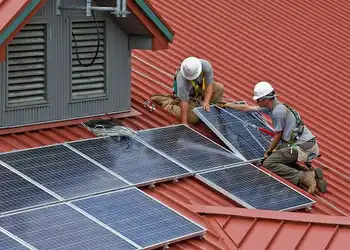Sweden to host Europe's largest windfarm
INFJARDEN, SWEDEN - Privately owned Swedish company Svevind AB has managed to succeed where many others have failed by siting a proposed windfarm in the desolate, nearly uninhabited region of northern Sweden.
The giant Markbygden project is a joint development by Svevind, which has a 75 in the project, and the German privately owned company Enercon GmbH, which holds the remaining 25.
The two companies have formed the joint venture company Markbygden Vind AB, which will jointly build and operate the windfarm in the high country around Infjärden, about 30 kilometers to the west of Piteå in the north of Sweden.
The windfarm will cover an area of about 450 square kilometers — almost five times the size of Paris. Only about 300 people live in the area. The area has excellent wind conditions, and three major power-transmission lines make a connection to Sweden's national grid more feasible.
The windfarm will eventually contain 1,101 wind turbines, each with a power rating of between 2 and 6 megawatts MW, which will be constructed and supplied by Enercon. With a total installed power capacity between 2,500 MW and 4,000 MW, the Markbygden project is set to become Europe's — and possibly the world's — largest windfarm. Each turbine will have a total height of 200 meters and a rotor diameter of between 86 and 126 meters.
The initial investment in the project is expected to be about 43 million euros US $53 million, with part of the capital being supplied by the Swedish Energy Agency. About 30 million euros US $37 million will be provided by KfW IPEX-Bank GmbH.
Markbygden Vind has already commenced work on a pilot project for the project, with a smaller scale windfarm known as the Dragaliden project, which is also located in the Piteå municipality. Permission to build and operate the Dragaliden project was granted in early 2008, and by the end of 2008, the first two of the planned 12 turbines — Enercon E-82 models rated at 2 MW each — were in operation.
The pilot project is designed to provide extra data on wind conditions in the area and to provide an opportunity for the local population, including Sami villagers, to experience the influence of wind turbines on the environment. The CEO of the Markbygden project, Wolfgang Kropp, is enthusiastic about the response from the Swedish authorities and the lack of local opposition. "If I was to try the same thing in Germany, it would take me 20 years to get everyone's agreement," he said.
With the excellent wind conditions and sparse population, the north of Sweden has enormous potential for wind energy projects. The Markbygden project alone will generate the equivalent of Sweden's current total planned wind power goals when fully operational.
At a time when the forestry, paper and metal industries in Sweden are facing stiff environmental regulations, the lack of public and governmental opposition to the prospect of a giant windfarm is a refreshing change. The otherwise relatively non-productive northern area of Sweden has the potential to become a center for green energy.
Related News

Lack of energy: Ottawa’s electricity consumption drops 10 per cent during pandemic
OTTAWA - Ottawa residents may be spending more time at home, but the city’s energy use has dropped during the COVID-19 pandemic.
Hydro Ottawa says there was a 10-to-11 per cent drop in electricity consumption in April, with the biggest decline in electricity usage happening early in the morning.
Statistics provided to CTV News Ottawa show average hourly energy consumption in the City of Ottawa dropped 11 per cent during weekdays, and a 10 per cent decline in electricity consumption on weekends.
The drop in energy consumption came as many businesses in Ottawa closed their doors due to the COVID-19 measures and physical…




